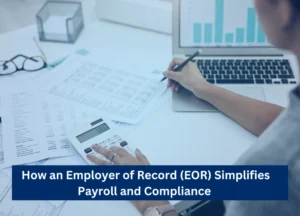The COVID-19 pandemic has changed the world; we have observed a significant dip in employees’ resilience levels, mental health, and confidence in employers in 2021.
Every employee exists somewhere on the mental health continuum, from surviving to thriving. It’s normal for their position on this continuum to fluctuate. However, evidence now indicates that there is a mental health epidemic occurring, especially after the pandemic.
According to one recent research conducted by work-tech startup Engage Rocket, there is a 17% decline in employees who are confident in their organization’s future between 2020 and 2021 and the level of employee burnout also increased by 9% in 2021.
Now mental health in the workplace has become a more important topic than before. It is estimated that, at any point in time, one in six (17%) working-age people suffer from some kind of mental illness, but post-pandemic 26% of workers experienced moderate-to-severe symptoms of depression, and 69% experienced moderate-to-high levels of stress, which is associated with very high personal and economic costs.
We all know the consequences of mental health problems in the workplace. It can be summarized as follows:
Absenteeism
- increase in overall sickness absence, particularly frequent short periods of absence;
- poor health (depression, stress, burnout);
- Physical conditions (high blood pressure, heart disease, ulcers, sleeping disorders, skin rashes, headache, neck- and backache, low resistance to infections).
Work performance
- reduction in productivity and output;
- increase in error rates;
- the increased amount of accidents;
- poor decision-making;
- Deterioration in planning and control of work.
Staff attitude and behavior
- loss of motivation and commitment
- burnout
- staff working increasingly long hours but for diminishing returns
- poor timekeeping
- Labor turnover (particularly expensive for companies at top levels of management).
Relationships at work
- tension and conflicts between colleagues;
- poor relationships with clients;
- Increase in disciplinary problems.
And a well-designed workplace supports individual mental health and leads to reduced absenteeism, increased employee engagement, and improved productivity. Effective mental health is a multidimensional wide concept and the workplace is an appropriate environment in which to educate individuals about and raise their awareness of, mental health problems.
For example, the workplace can promote good mental health practices and provide tools for recognition and early identification of mental health problems and can establish links with local mental health services for referral, treatment, and rehabilitation. Ultimately, these efforts will benefit all by reducing the social and economic costs to society of mental health problem
Here are some tips on how to promote mental health and wellbeing among the existing workforce and new recruiters.
- Implement mentally healthy workplace practices
Boost your team’s mental wellbeing, by implementing some simple healthy workplace practices, like:
- Regular social events to boost the physical and mental wellbeing of your staff,
- Measures to promote and facilitate early help-seekers,
- Increasing awareness of the mental illness and reducing stigma,
- Support employees who recover from mental illness,
- “Men’s Sana in Corpore Sano” is a Latin phrase, usually translated as “a healthy mind in a healthy body”- So You could encourage Yoga, Tai-Chi, or any other form of exercise. Mental and physical health are interdependent, one can’t be achieved without achieving the other one.
- Promote Work-Life balance
The boundaries between work life and home life have become increasingly blurred with the significant shift to home working. This needs to be monitored carefully, as a poor work-life balance is a shortcut to stressed and burned-out employees.
Take proactive steps to keep your employees’ work/life balance healthy. You could encourage your staff to work sensible hours, set realistic work demands, ensure they take full lunch breaks, and advise them to avoid working at weekends.
- Keep the conversation going
Mental well-being is a lifelong journey, so encourage your employees to keep the mental health conversation going and have regular one-to-one meetings with members of your team to discuss their mental health.
By stressing their well-being, you will help staff think more about their mental health or that of their colleagues, and reflect on the factors that affect this.
- Maintain Confidentiality and Anonymity
The mental health issue is still a social stigma and people worry that if they open up about their mental health; the conversation will not stay private and may affect their careers. These concerns prevent them from discussing their experiences and often cause them to allow issues to worsen.
Make it clear to your staff that you take their privacy seriously, and that opening up about their mental health, or using mental health resources, will never be tracked or used against them.
- Professional Helps and Further Support
You are not an expert on mental health and well-being so there will always be issues to deal with that are outside of your capabilities and experience.
When this happens, it’s important as a leader to know your limits, including when and where to signpost to other services.
To ensure you’re well-prepared, find out what your company offers about Employee Assistance Programmes or other wellbeing initiatives, and communicate it clearly and regularly.












